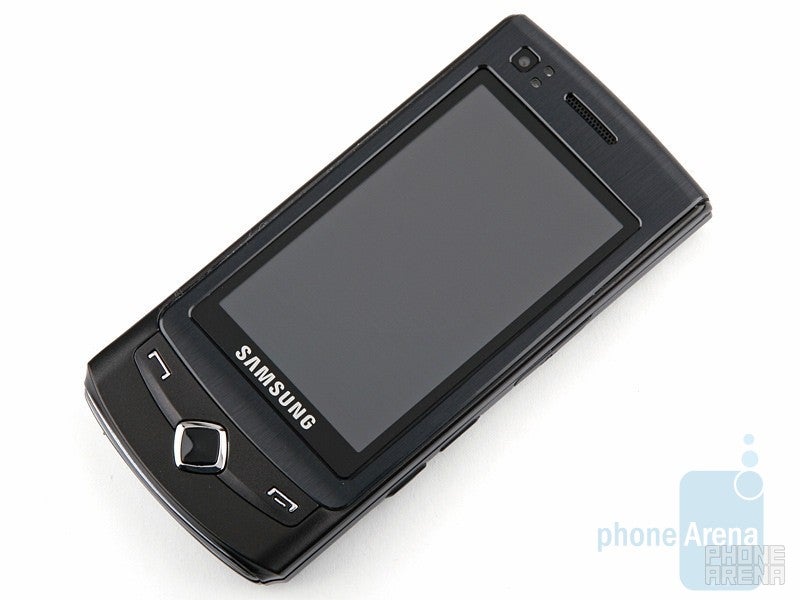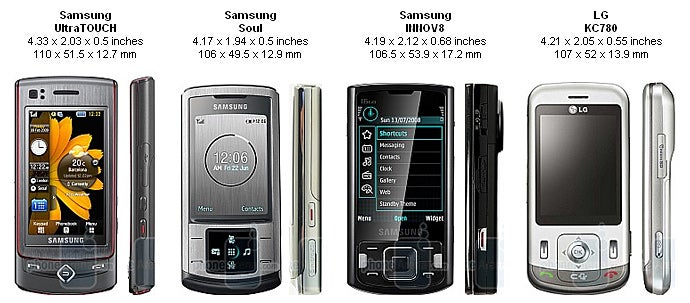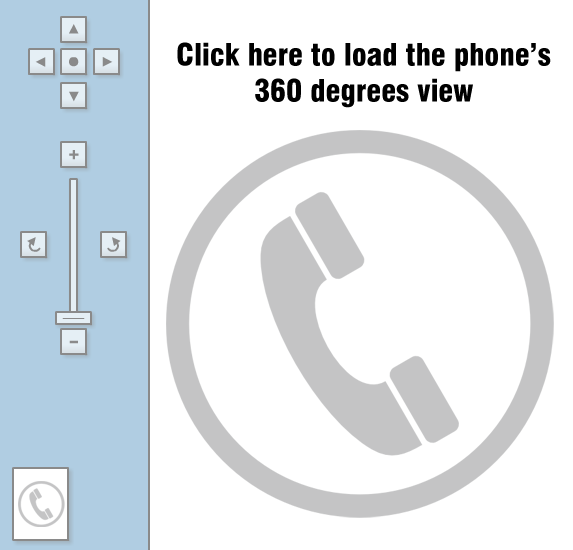Samsung UltraTOUCH Preview

A few words:

You certainly remember that one of these was the Samsung UltraTOUCH, which is going to be the new high-end model in the manufacturer’s Ultra series. Being an Ultra series phone means that it will bring together the positive sides of other more narrowly developed devices and put everything in a nice and good-looking body, making it easily acceptable by the common user. The UltraTOUCH will be Samsung’s flagship model in the course of 2009, as it combines several key features. To begin with, it sports a 2.8-inch touch-sensitive display which allows it to take advantage of the latest TouchWiz user interface and a rich number of widgets, automatically turning it into an adequate modern device. On the other hand, it is also equipped with an up-to-date 8-megapixel camera. You would say it is a real cameraphone?! Not exactly. In addition, it has a really slim and attractive body, along with a numeric keypad, designed to turn heads from the ground up. Still, its various features and capabilities would not let us refer to it as just a fashion accessory. So what exactly is the UltraTOUCH? In our view, it is a multifunctional - all-purpose - high-end device, designed to satisfy the pretentious needs of a widest range of users, while still being a phone in the first place.
Design:
The Samsung UltraTOUCH succeeds the Soul, but in contrast to it, the navigation touch display is no longer present, freeing some space for the larger 2.8-inch touch-sensitive screen. Right below it there are just a few buttons – the send and end ones and the unique-looking back button, which on our prototype does not feature a “back arrow”. However, it still introduces the unique rhomb-like shape with a metal frame.

You can compare the Samsung UltraTOUCH with many other phones using our Size Visualization Tool.
Wondering how to dial a number? Simply slide the phone open to reveal the standard keypad. As a whole, the numeric keys are big enough, but are quite different in design to the ones of the MWC unit. Still, we would avoid giving an opinion on how handy they are since, as we’ve mentioned above, our unit is a prototype and these elements are a subject to change.
Other elements here are the loudspeaker and the camera for video conversations, positioned above the display. The left side houses only the volume rocker; and the camera shutter, the hold key and the microUSB port (fortunately, there is one) are on the right.
Turning the phone over reveals a simple design, with only the Samsung logo standing against the black housing. Opening the slide provides a bit more flare; the 8 megapixel camera is revealed on a bright orange finish, complete with flash and a tiny mirror.
Samsung UltraTOUCH Video Preview:
Samsung UltraTOUCH 360 DegreesView:
Interface, Phonebook and Organizer:
The UltraTOUCH uses the latest version of Samsung’s TouchWiz user interface, coming together with a widget sidebar, but more on the drag-and-drop mini-apps later. Directly from the home screen you can call up the phonebook, as well as the main menu through the icons in the lower end, but keep in mind that the main menu can also be accessed by sliding a finger to the left. Sliding a finger to the right will take you to the photo contacts screen, which allows you to store shortcuts to your favorite ones.
The phonebook of the UltraTOUCH, features a drop-down menu with three options: Contacts, Groups and Favorites. Below the drop-down menu you’ll find a search field which, if the phone is closed, will bring up the on-screen numeric keypad, the keys of which are big enough and easy to use. The manufacturer has also provided the phone with one really smart feature – fake call. To some of you, this may seem like something useless, but it might actually prove invaluable in case you want to avoid a boring conversation or the presence of someone you do not like. Just hold the volume down button and your phone will simulate an incoming call.
In order to gain access to the organizer tools we have to navigate to the main menu. Do not expect something truly exciting here; as usual Samsung has taken care to include everything that may eventually come in handy: a calendar, memos, tasks, world clock, calculator and a unit convertor. Apart from these, in the applications menu you will also find a voice recorder, timer and stopwatch.
Widgets and Entertainment:
Enough of the boring stuff, let’s take a quick look through what Samsung’s finest has to offer in this aspect. Everyone knows that widgets are cool, but in most cases there are just a few of them. It looks like the Korean manufacturer has done its best and we cannot complain of a lack here. Most of them aren’t very original and are actually shortcuts to different functions of the phone, but this applies only to the preloaded ones. We now have a special new widget, the purpose of which is to allow you to download more widgets! We truly hope that by the time of UltraTOUCH’s release we will already have a rich catalogue of widgets (preferably free ones).
In terms of entertainment, the new handset offers the standard stuff. Its music player makes a good use of the touchscreen. Being fully optimized for use with fingers, it has large, easy to press buttons and an equalizer with quite a few presets. In case you’re tired of listening to the same old song, you can rely on the FM radio, which also looks really nice and fresh, or you can even watch full-length movies thanks to the DivX and Xvid support.
Camera and GPS:
We have already mentioned that this headline phone is a real camera powerhouse, utilizing an 8-megapixel sensor with autofocus. The goodies for the photographers, however, do not end here, as the UltraTOUCH’s camera interface also has some advanced options, including exposure control, white balance, effects, ISO, Anti-Shake function and Wide Dynamic Range. Video recording is also present at a maximum of VGA resolution, not HD one as in the new OMNIA.
The UltraTOUCH will come in two versions: with GPS and non-GPS package. The former will include a GPS license and a special GPS interface submenu, along with a Route66 PC Sync CD, 1GB microSD card, preloaded with maps, and a Navigation Quick Start Guide. On the other hand, the non-GPS package will not include a license, but will have a Google Maps submenu.
Expectations:
As a whole, we enjoyed our experience with the UltraTOUCH. No matter how functional a phone is, appearance is what always counts, and in this aspect, the UltraTOUCH scores high. However, we aren’t fully convinced that the slider is handy enough to use, since it lacks a protruding edge (unlike the Soul), which usually allows you to move it upwards and downwards more easily. On the other hand, the device has been designed for a touchscreen use, so you won’t need to open it too often. Using the touchscreen is fairly pleasant. It has a nice vibration feedback, but the interface is still quite buggy at this point and we certainly hope that everything will be fixed by the time of its release.
The UltraTOUCH uses the latest version of Samsung’s TouchWiz user interface, coming together with a widget sidebar, but more on the drag-and-drop mini-apps later. Directly from the home screen you can call up the phonebook, as well as the main menu through the icons in the lower end, but keep in mind that the main menu can also be accessed by sliding a finger to the left. Sliding a finger to the right will take you to the photo contacts screen, which allows you to store shortcuts to your favorite ones.
The phonebook of the UltraTOUCH, features a drop-down menu with three options: Contacts, Groups and Favorites. Below the drop-down menu you’ll find a search field which, if the phone is closed, will bring up the on-screen numeric keypad, the keys of which are big enough and easy to use. The manufacturer has also provided the phone with one really smart feature – fake call. To some of you, this may seem like something useless, but it might actually prove invaluable in case you want to avoid a boring conversation or the presence of someone you do not like. Just hold the volume down button and your phone will simulate an incoming call.
In order to gain access to the organizer tools we have to navigate to the main menu. Do not expect something truly exciting here; as usual Samsung has taken care to include everything that may eventually come in handy: a calendar, memos, tasks, world clock, calculator and a unit convertor. Apart from these, in the applications menu you will also find a voice recorder, timer and stopwatch.
Widgets and Entertainment:
Enough of the boring stuff, let’s take a quick look through what Samsung’s finest has to offer in this aspect. Everyone knows that widgets are cool, but in most cases there are just a few of them. It looks like the Korean manufacturer has done its best and we cannot complain of a lack here. Most of them aren’t very original and are actually shortcuts to different functions of the phone, but this applies only to the preloaded ones. We now have a special new widget, the purpose of which is to allow you to download more widgets! We truly hope that by the time of UltraTOUCH’s release we will already have a rich catalogue of widgets (preferably free ones).
In terms of entertainment, the new handset offers the standard stuff. Its music player makes a good use of the touchscreen. Being fully optimized for use with fingers, it has large, easy to press buttons and an equalizer with quite a few presets. In case you’re tired of listening to the same old song, you can rely on the FM radio, which also looks really nice and fresh, or you can even watch full-length movies thanks to the DivX and Xvid support.
Camera and GPS:
We have already mentioned that this headline phone is a real camera powerhouse, utilizing an 8-megapixel sensor with autofocus. The goodies for the photographers, however, do not end here, as the UltraTOUCH’s camera interface also has some advanced options, including exposure control, white balance, effects, ISO, Anti-Shake function and Wide Dynamic Range. Video recording is also present at a maximum of VGA resolution, not HD one as in the new OMNIA.
The UltraTOUCH will come in two versions: with GPS and non-GPS package. The former will include a GPS license and a special GPS interface submenu, along with a Route66 PC Sync CD, 1GB microSD card, preloaded with maps, and a Navigation Quick Start Guide. On the other hand, the non-GPS package will not include a license, but will have a Google Maps submenu.
Expectations:
As a whole, we enjoyed our experience with the UltraTOUCH. No matter how functional a phone is, appearance is what always counts, and in this aspect, the UltraTOUCH scores high. However, we aren’t fully convinced that the slider is handy enough to use, since it lacks a protruding edge (unlike the Soul), which usually allows you to move it upwards and downwards more easily. On the other hand, the device has been designed for a touchscreen use, so you won’t need to open it too often. Using the touchscreen is fairly pleasant. It has a nice vibration feedback, but the interface is still quite buggy at this point and we certainly hope that everything will be fixed by the time of its release.














Things that are NOT allowed: